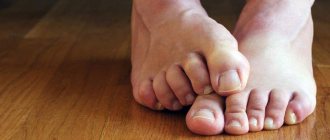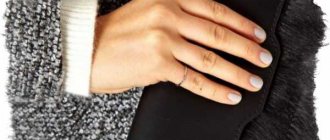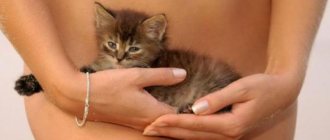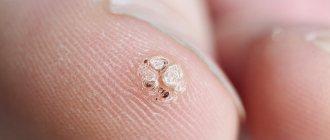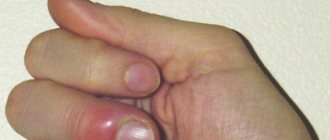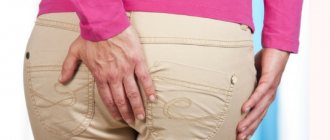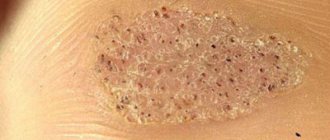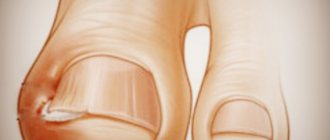Many patients do not pay much attention when they suddenly develop a painful lump on their foot, and mistake it for a normal callus formation. Pathologies of this kind are often accompanied by severe discomfort for the patient, and in the absence of adequate measures they can cause serious deformities of the foot and lead a person to lameness. To avoid serious complications, it is necessary to consult with your doctor and stop the pathological process at the initial stage of its formation.
Classification of seals on the foot
If a lump appears on the foot that causes pain, it should be classified in order to prescribe adequate therapy. The characteristic shape of the seal resembles a ball, the dimensions of which range from 1-2 mm to 3-4 cm. When you press on the seal, a sharp pain occurs.
The most common factors when a lump appears on the foot and hurts may be the following conditions:
Corns
With keratinization of the skin on the feet, which is caused by improperly selected shoes, obesity, excessive sweating, flat feet, arthritis, etc. This reason is the most common. Corns can be flat, dry, raised, with or without rods. They have a yellowish-brown tint, a rough skin surface with reduced sensitivity to external influences.
In some cases, cracking of the foot is possible, accompanied by pain during increased physical activity. In the absence of timely treatment, the foot may become deformed, displaced, and the ball of the big toe may become enlarged.
Corn
A distinctive feature of calluses is their shape, which is a round, limited area of skin on the heel or toes, which is accompanied by pain even with slight pressure. Often, calluses can appear in a child, which is associated with the wrong choice of shoes, flat feet and injuries.
Calluses can be wet or dry. Wet calluses are the most dangerous, since they contain an accumulation of fluid (blood, serous exudate), which can leak out when the callus is traumatically damaged. As a result, there is a possibility of infection of the wound surface. In addition, wet calluses can transform into dry calluses, but with deeper roots.
It will take a lot of time to completely get rid of calluses. If the inflammatory process develops, antibiotic therapy may be prescribed, and if the symptoms are severe, surgical intervention is recommended.
Warts
In appearance, warts are very similar to calluses. The color of the resulting bumps practically does not differ from the color of the skin, and the foot is rough on palpation. When pressing on the plantar wart, acute pain is observed. The difference between a wart and calluses is the presence of a dark dot in the middle, but if the wart grows deeply, it is quite difficult to notice it.
Warts are of a viral nature and are classified in medicine as benign neoplasms.
The strains of the virus responsible for the formation of warts on the sole of the foot are not dangerous. The virus is not capable of transmitting from person to person and is activated only in a humid, warm environment. For a wart to appear, a starting point (an abrasion, injury, etc.) is required, as well as a weakening of the body’s immune defense.
Important! After surgical removal of warts, a long rehabilitation period is required, since the roots of the wart grow quite deeply, which requires more radical surgery.
Atheroma
A seal of this type is quite movable and soft to the touch. The cause of atheroma formation is the inflammatory process in the sebaceous gland. During physical activity on the lower extremities, pain symptoms are likely to occur, as well as various types of deformities in the arch of the foot.
The main condition for the success of therapy for atheroma is careful adherence to hygiene measures, prevention of damage to the integrity of the skin, normalization of immune defense and the choice of the right shoes.
Thrombophlebitis
This disease is accompanied by compactions in the lower extremities and is characterized by a chronic course. In the process of disruption of blood flow, a clot (thrombus) is formed, diseased veins become inflamed, and a dark blue compaction appears at the site of development of the pathological process. Even with slight pressure on the tubercle, sharp and severe pain occurs.
This is what thrombophlebitis of the deep veins of the limb looks like
Bursitis
This disease in most cases is characterized by a benign tumor-like formation filled with gel-like contents. On palpation, the seal is round, mobile, elastic and soft. Painful symptoms occur as a result of physical stress on the affected leg. Therapeutic measures for bursitis include immobilization of the affected limb, wearing comfortable shoes, and physiotherapy.
In case of chronic development of bursitis, a surgical puncture of the bursa is performed, followed by washing the cavity with antibiotics and prescribing hormonal drugs.
Phlegmon
Even small wounds or cracks in the foot can cause the formation of a seal with phlegmon. Often, phlegmon develops after boils, carbuncles and long-term non-healing ulcerative neoplasms. The site of inflammation is red and hot to the touch, there is acute unbearable pain, weakness and deterioration in the general condition of the patient.
Phlegmon requires mandatory treatment, including surgery, since various complications may lead to amputation of a limb, and in some cases the patient may die. Therefore, at the first symptoms of the disease, you should immediately contact a medical facility.
Heel spurs
With increased calcium deposition, heel spurs may form. In this case, the soft tissues of the foot compress the nerve endings, causing unbearable pain to the person. Typically, the incidence of heel spurs within the joint increases in older age, due to wear and tear of the fatty tissue on the bottom of the foot.
Treatment is carried out with external medications and intra-articular blockades, which effectively relieve the inflammatory process, relieving pain symptoms. In the absence of a positive result, surgical intervention is recommended.
Keratoderma
This disease is extremely rare and the causes of its occurrence are not fully understood. Presumably, genetic mutations can lead to keratoderma. This group includes several types of dermatoses accompanied by impaired keratinization. Externally, the growth resembles a yellow-brown tubercle, slightly rising above the skin with the presence of small depressions on it.
Keratoderma belongs to the group of dermatoses that are accompanied by a violation of the keratinization process
Seals cause discomfort to the patient, and in some cases they may indicate the development of a serious inflammatory process in the body. It is recommended to treat the disease as an internal autoimmune disorder. Characteristic symptoms of keratoderma are lack of pain and constant itching.
What is a callus?
There are two types of ingrown calluses on your toes and feet: dry and wet.
Surely, many have encountered a similar problem when putting on new, unworn shoes. A bubble with liquid content appears on the heel or toe (most often the little toe), which, as a rule, quickly disappears. However, with constant mechanical action (rubbing), it can transform into a dry callus, which over time takes the form of a rod.
Among all such skin growths, it is this type of corns that poses the greatest danger. This is a round formation with a small hole in the center, covered with a hard cap, under which there is a rod that goes deep into the tissue. When pressing on the callus, pain and itching occur. This is due to the fact that the mechanical impact causes compression of the nerve endings around the root of the callus. In the damaged area of the foot, there is a disturbance in blood flow, discomfort appears in the area of the foot and heel, the person experiences difficulty walking even in different shoes , and his gait changes.
Reasons for appearance
An ingrown callus can appear as a result of the following factors:
- Mechanical effects (pressure, friction) on the skin, which are permanent. Socks of the wrong size, torn, wrinkled insoles, tight shoes - all this puts pressure on the foot, rubbing it. As a result, a skin growth, that is, a callus, appears on the toes.
- Damage to the skin by a foreign body (for example, a splinter, a grain of sand, etc.). If measures are not taken in time, the foreign object will grow into the stratum corneum of the skin, which will lead to the formation of a painful growth.
- Constantly walking barefoot. Quite often, such skin growths appear in village residents, as well as in children, who like to run barefoot during country holidays.
- Poor quality shoes. While wearing it, the skin of the feet sweats, does not breathe, slips, resulting in increased friction. The crumpled insole also adds “fuel to the fire”.
- The presence or absence of a heel. A skin growth can appear under the influence of two completely opposite factors - a flat sole and a high heel. Both lead to the formation of corns.
- On the fingers and palms, neoplasms form during prolonged work with various tools. Ignoring the situation leads to the degeneration of an ordinary callus into a dry one. After some time, when the epithelium is injured or damaged by a fungus, a root grows, going deep into the tissue.
- Viral or fungal infection. Calluses that appear as a result of exposure to pathogenic microorganisms are quite difficult to treat , especially the advanced form, when the core has already grown deeply into the tissue.
Treatment options
If a lump appears on the foot and it hurts to step on it, first of all you need to consult a doctor, since there are many reasons, based on which individual treatment is selected.
The following methods are used to get rid of corns:
- cryodestruction (use of liquid nitrogen) – this method of control is characterized by the absence of scars after removal of a growth on the foot;
- the use of a laser beam - allows you to influence deep tissues;
- external agents (creams, ointments and gels) - have an antiseptic and softening effect on the affected tissue. The most commonly used ointment is Bensalitin and Lekar cream;
- adhesive plasters and pencils that have a healing effect - Shuyangxuan, Salipod and other products in this group.
In addition, in pharmacies you can buy socks that are soaked in special medicinal herbs that relieve the pathological process. Before using them, you must carefully read the instructions that come with the package.
The procedure for removing a plantar wart using cryodestruction
If callous formations appear, the following procedures are recommended:
- in case of weeping calluses, the damaged skin is carefully removed in compliance with all sterility rules and treated with an antiseptic (furacilin, hydrogen peroxide, chlorhexidine, etc.) to prevent further infection;
- dry callus is treated daily with emollient creams, oils (glycerin, castor oil, etc.) until the seal is completely healed. Calluses can be treated independently, depending on what stage of deformation they are at;
- treatment of warts that have led to compaction on the foot requires the use of antiviral agents, for example, Feresol or Podophyllin. In addition, external agents with retinoids, salicylic acid and traditional methods of treatment (celandine juice, garlic, onion, etc.) are actively used.
Medical removal and treatment procedure
How to remove calluses on the toes and how to treat them is described in detail below. medications are used to treat hyperkeratosis :
- Cream, gel or ointment for calluses on toes based on salicylic , lactic or benzoic acid . These compounds are able to soften keratinized tissue and exhibit antiseptic properties.
Attention ! The preparations are applied only after thorough washing and steaming of the skin to a strictly limited area and sealed with a simple band-aid. If the medicine is used incorrectly, tissue burns are possible .
- Special patches based on salicylic acid with auxiliary components in the form of petroleum jelly, phenol, lamb fat and wax, which soften, disinfect the skin and relieve inflammation. A callus patch is a strip of adhesive fabric with a center area soaked in a salicylic acid compound. It is applied strictly to keratinized skin without contact with healthy areas. The medicine lasts 1-3 days , as a result, dead tissue is rejected.
- The use of baths with a saturated solution of iodine and potassium permanganate. The finger with the callus is kept in the solution for up to 30 minutes and is not wiped off at the end of the session. After the potassium permanganate has dried, the area is treated with iodine . The procedure is repeated every other day, such formation disappears after 2-3 weeks .
If a callus has formed on your toe, how to get rid of it using a patch is clearly shown in the video below.
Use pharmacy and folk remedies
How to remove a callus on a toe using pharmaceutical and folk remedies? The formations are treated by treating them with an antibacterial composition used to treat minor cuts and wounds.
Treatment of dry and old calluses is a more labor-intensive and lengthy process, which is carried out using the following means:
- ointments and creams containing salicylic, benzoic or lactic acid. All drugs have a keratolytic (softening) effect. These include Bensalitin, Nemozol, Super Antimozolin, Stop-Mozol;
- plasters , taking into account the type of callus and the place of its occurrence: against corns - used to protect against pressure and rubbing of shoes;
- against ingrown ones - with a protective and therapeutic effect (Compid patch);
- for dry ones - Salipod patch;
- from wet ones - with an analgesic, disinfectant and protective effect;
- protective gel Velcro – for use in shoes.
Preventing the appearance of seals
Prevention, including:
- compliance with hygiene measures;
- It is recommended to treat your feet with nourishing creams and herbal decoctions;
- a special gymnastics complex for the feet has a positive effect;
- To prevent your feet from hurting, a massage is recommended;
- doctors recommend swimming, light jogging, cycling and walking barefoot on sand and grass;
- any abrasions, wounds and cuts on the foot, and especially under the toe, should be treated in a timely manner;
- shoes should be comfortable and the heel should be of optimal height.
If you follow preventive measures, it is quite possible to prevent the formation of a more serious seal (rod) on the foot. In the event that, despite all the advice, it was not possible to avoid compaction, professional medical assistance is needed to adjust further actions.
You should not try to cope with the tumor on your own (with the exception of dry calluses), since such intervention can lead to infection and further spread of the inflammatory process. With careful attention to the state of your own body, it is quite possible to avoid negative consequences in the future.
The human legs are a complex mechanism consisting of 26 bones, 33 joints, 126 muscles, and ligaments of nerves. It is a resilient system of the body that can support a person’s weight.
Every seventh person on the planet suffers from foot pain. Unfortunately, people go to the doctor when the process has already started, perceiving the first painful sensations simply as a bruise.
The appearance of a lump and pain on the foot are symptoms of serious problems in the body. Delayed treatment leads to lameness.
Physical causes of tightness and pain in the foot include:
What should be done in case of an abscess or inflammation?
Inflammation and suppuration indicate the penetration of infection, which poses a threat to the body as a whole. I get a callus on my toe, what to do, how to treat a callus on my toe?
Successful treatment may require remedies for calluses on the toes: antibiotics and a surgical procedure performed in a sterile hospital environment.
At least 7 days must pass before a purulent callus appears.
But the disease cannot be brought to this stage, as there is a risk of gangrene. A callus popped up on my toe, what should I do if it breaks out? If you notice the first alarming symptoms, you should immediately consult a doctor .
Corns
A common cause of discomfort and pain. Thickening of keratinized dead skin tissue on the soles of the feet is a consequence of uncomfortable shoes, excess weight, flat feet, excessive sweating of the feet, and rheumatoid arthritis.
Corns are: convex, flat, dry, with a core. They have a yellow-brown tint, a rough skin surface with reduced sensitivity. Sometimes cracks occur and pain occurs during physical activity.
If treatment is not timely, deformation of the foot, displacement, and enlargement of the big toe occur. This position causes pain. Treatment is possible at home, using traditional methods and surgery.
Corn
Skin thickening on the toes and heels of the foot causes pain when pressed. Unlike corns, they have a certain outline, round, not large.
Calluses have a dry appearance and a wet appearance. Wet calluses often leak blood; the fluid that accumulates there appears as a result of tissue damage. Wet calluses transform into dry calluses with deep roots.
Treating calluses is a long process and can be done at home or through surgery.
You cannot cut off corns and calluses at home!
Traditional medicine prescribes antibiotics for inflammation and infection in the leg. In severe cases, surgery is possible.
The reasons for the appearance of corns and calluses are uncomfortable shoes, flat feet, physical damage. This is the process of the skin's protective mechanism in the area of friction and excessive pressure.
Treatment with folk remedies provides results, subject to hygiene rules and careful attention to the condition of the feet.
Drug treatment for bunions at home
Medicines, physical therapy, and orthopedic devices eliminate inflammation. Correct and persistent treatment of bunions at home leads to a reduction in the number of exacerbations. The occurrence and spread of pain is prevented by non-narcotic analgesics and NSAIDs. They are now widely used in the treatment of a large number of diseases - from colds to changes in joints.
To prevent pain in the big toe bone, use NSAIDs (internally - tablets, externally - ointments, creams):
- inodamethacin (Metindol ointment, tablets, intramuscular injection);
- diclofenac (patch, ointment, cream “Voltaren”);
- ibuprofen (tablets, suppositories, Dolgit cream);
- butadione (tablets, ointment).
The downside of all NSAIDs is their negative effect on the stomach. Side effects are more pronounced when taking the tablets orally. To avoid damage to the stomach, you need to follow the dosage and frequency of administration. You can use rectal suppositories instead of taking pills. The same active ingredients as in preparations for systemic therapy contain ointments and gels for external use. Apply the product to the bone under or without a bandage. Typically, manufacturers specify in the instructions which application method is preferable.
Warts on the feet
Refers to infectious causes of compaction under the skin. Warts are viral infections that occur in fleshy growths and are classified as benign neoplasms.
In appearance they resemble a callus. They have the same skin color, the surface of the foot is rough to the touch. On the other hand, the skin of the feet is softer; pain when pressing on the wart gives the feeling of having a sharp pebble in the shoe. A distinctive feature of warts is a dark dot in the center; if it is deep, it is difficult to see with the naked eye.
The cause of warts is the human papillomavirus, of which there are more than 100 strains. Warts on the feet are caused by the first 4 types of HPV and weak body immunity.
The virus strains that cause plantar warts are not contagious. The virus is not transmitted from person to person and thrives in warm, moist environments. To spread, it requires an entry point—a small abrasion on the foot—to enter the body. When a wart appears depends on the immune system.
It is believed that when warts are removed surgically or traditionally, the disease goes away. This is wrong. Without getting rid of the virus, the likelihood of warts returning is high. The doctor performs a tissue biopsy to ensure that the structure is benign. Warts often disappear without surgery. In acute forms of the disease it is necessary.
Remember! After foot surgery, healing is slow and the roots of the wart are deep. Causes pain when pressure is applied to the foot. Subsequently, careful skin care is needed.
Atheroma
The seal under the skin is soft to the touch and movable. Occurs when the sebaceous gland becomes inflamed. It often doesn't hurt. When inflamed, it causes pain. Leads to foot deformation. With constant stress, the likelihood of pain is high.
They are treated with folk remedies and surgery. Recurrence of the disease is possible. The main thing is to maintain foot hygiene and avoid injury so that the seal does not reappear. Maintain your immune system at the proper level, maintain foot hygiene, and don’t forget about comfortable, high-quality shoes.
Hygroma
The rounded, gel-like contents of a benign tumor in the periarticular area of the joint. Determined by palpation. A round lump under the skin, soft and elastic to the touch. The cause of the disease is bursitis.
Bunions cause pain and swelling that increases throughout the day. The disease occurs when there is inflammation in the synovial bursa (bursa). When there is a constant accumulation of fluid in the sac of the heel bone, the bursa increases in size. The surface of the skin above the walls becomes rougher and thickens. The place of the tendon under the skin will be inflamed, the leg will hurt during physical activity.
Treatment requires rest for the inflamed joint, physiotherapy, and comfortable shoes. In the chronic stage, a puncture of the bursa is prescribed, the cavity is washed with antibiotic solutions, and treatment with hormonal drugs. A purulent wound on the foot is treated according to generally accepted rules.
Reasons for appearance
The load on the foot due to excess weight, sports, hard work is not the only thing that affects the formation of a lump near the big toe. There is a hereditary predisposition to such a reaction of the musculo-ligamentous apparatus of the legs. Therefore, some people develop bunions at a young age, while others wear narrow high-heeled shoes and do not notice changes in the shape of the foot until old age. There are several diseases that are associated with the appearance of hard or soft growths on the toes.
Why does a bunion form on the big toe?
- hormonal and metabolic disorders that cause changes in cartilage;
- excess body weight, heavy load on the feet;
- wearing narrow, tight, uncomfortable shoes;
- connective tissue diseases;
- congenital deformities;
- weakness of muscles and ligaments;
- cartilage damage;
- flat feet;
- injuries.
Doctors call the pathological change hallux valgus or hallux valgus deformity. People usually talk about “a bone in the foot.” The hard bump at the base of the big toe is the head of the first metatarsal bone along with deposits of calcium salts. The appearance of a lump is accompanied by discomfort, swelling, pain, and redness of the skin. The osteochondral growth is hard and slowly increases in size. It is noticeable that the big toe is deviated towards the second toe, which is often deformed.
Treatment tactics for various causes of the appearance of bunions depends on both the etiological factors and the stage of development of the pathological process.
A round bump on the top of the big toe occurs with arthrosis, bursitis, gouty and psoriatic arthritis. First, a slight swelling appears due to inflammation and swelling of the soft tissues. The lump feels mobile, warm or hot to the touch. Among the reasons for the appearance of growths, experts also name infections.
Tophi in gout are formed by crystals of uric acid salts. The sizes depend on the number of urate stones in the tissues. Tophi are dense and painless to the touch, but when rubbed by shoes or injured, they can become inflamed. It is necessary to undergo an x-ray so that the doctor can establish a diagnosis and prescribe adequate therapy.
Heel spurs
Calcium deposition, when developed, provokes the growth of the heel bone. The soft tissues in the foot become irritated, swell, put pressure on the nerves, and cause pain. Increases with age, fatty tissue wears away on the bottom of the foot.
Treatment is reduced to the prescription of external medications, and, if necessary, drug blockades are carried out. Drugs administered orally eliminate the syndrome and relieve inflammation. If the methods do not help, surgical treatment is necessary.
Keratoderma
This is a group of dermatoses that provoke a disruption of the keratinization process. A rare disease, the causes are unknown. It presents as hard yellow-brown bumps above the skin with small depressions, sometimes the skin takes on the appearance of horn-like protrusions. It is believed that they are caused by mutations occurring in genes. Treated like autoimmune diseases. The disease lasts throughout life. The leg does not hurt, itching and discomfort are constantly present.
Lumps under the skin of the feet cause severe discomfort. The causes of compactions are injuries, exacerbation of diseases, metabolic disorders, and infections. Sometimes painful neoplasms are harbingers of inflammatory processes in the body.
Prevention of foot diseases
The areas of the foot are associated with the functioning of internal organs; a healthy foot is a sign of health. Therefore, you need to take care of your feet.
Don't forget about prevention. It is divided into two types:
- hygiene rules;
- physical exercise.
- Keeping your feet clean.
- Pamper your feet with herbal baths and rubs.
- Wear comfortable shoes. If you must wear stilettos, give your feet a rest. It is better to have replacement shoes.
- Buy socks made from natural materials, allowing your feet to breathe.
Physical exercise:
- Good for the feet: cycling, running, swimming, skiing.
- Special gymnastics for feet. Not complicated, doesn't take much time.
- Massage, self-massage.
- Walking barefoot on grass and sand.
Remember! Physical injuries: abrasions, cuts, wounds on the foot must be carefully treated. The skin on the foot is thick and requires care. A person may forget about the injury; the appearance of a lump on the foot later may not be associated with an old injury. The skin on your feet is not something to joke about!
- Pain factors
- Neoplasms on the feet
- Calluses and warts
- Prevention of foot seals
The condition when a lump appears on the foot and hurts can have many causes. Very often, the manifestation of such symptoms is associated with physical influences and a number of diseases. An advanced painful condition very often leads not only to discomfort, but also to deformation of the foot, and in the future – to lameness. Doctors recommend not to neglect such cases and to visit a doctor as soon as possible. This will help avoid serious consequences and stop the onset of pathology.
How to get rid of skin growths on the big toe?
Skin growths on the big toe are much more common than on other toes. Wearing tight shoes, as well as deformation of the foot when walking, affects it. It is better, of course, to make sure that you choose comfortable and high-quality shoes. Now many manufacturers offer this. For example, shoes Ecco, Geox, Clarks, etc. You can buy beautiful shoes from Italian manufacturers, but then you need to choose one that does not squeeze your toes when walking. And shoes with narrow toes are not suitable at all. Moreover, the toes of the shoes should not be flat, as in ballet shoes. In other words, your fingers should be as relaxed and free as possible. It's a good idea to get checked for a possible fungal infection. All skin problems are in one way or another connected with some problems, and not always visible to the eye. The fungus can affect not only nails, but also internal organs and skin, due to which its renewal is inhibited, cracks, corns, and keratinization appear - https://www.moscow-faq.ru/all_q...
How to relieve swelling from a bruise or fracture - www.moscow-faq.ru/all_question/wayoflive/zdorove/2012/June/44928/132323
What foods can change skin pigmentation? — https://www.moscow-faq.ru/all_q…
Age spots - https://www.moscow-faq.ru/all_q...
In summer, the choice of shoes is more varied. For example, Scholl shoes are completely suitable for those in which it will be easier to get rid of growths, chafing and calluses. The question is no longer about how to get rid of them, but about ensuring that, once removed, they do not reappear.
In order for the skin to be soft and elastic, so that fewer coarse layers form on it, so that skin cells are renewed correctly, the body needs keratin -
What foods does the body get keratin from? — https://www.moscow-faq.ru/all_q…
Keratin is synthesized by the skin. Keratin synthesis in the body is a complex biological process. Special stem cells, keratinocytes, are responsible for it. Our skin cells can produce keratin in different ways. Any abnormalities in the body (keratosis, ichthyosis, warts, bad nails, alopecia, psoriasis and many others) may indicate disturbances in keratin synthesis. Many of them are associated with hyperproduction of keratin, which leads to intensive division of skin keratinocytes and intensive protein synthesis in them.
A pumice stone will help remove the rough layer of skin. With the mechanical but gentle action of fine pumice abrasive, excess skin is easily removed. The remedy Corn (also called corn), a remedy for calluses and corns with celandine extract, has proven itself - www rigla ru It easily removes old, rough skin. After each such procedure, the legs must be lubricated with a nourishing cream. These can be professional care creams (for example, the Scholl foot care series), nourishing butter creams, caring emulsions, and even regular hand creams. Wax is perfect for cuticles and nails. Any cosmetic wax that contains lanolin, panthenol, tocopherol and various nourishing oils.
Well, then it’s a matter of comfortable shoes.
A foot that is subject to deformation while wearing the wrong shoes, the lack of a comfortable arch support - all this can lead to the fact that the foot will look unattractive.
But creams are not a panacea. If they are used on a regular basis, there will be an effect. But it’s not always good to rub “chemistry” into yourself. It is better to alternate it with proven, harmless means. We're talking about Vaseline. It is a dermatoprotector. All dermatoprotective agents have a softening and regenerating effect. Regular pharmacy Vaseline - 20 rubles - all the pleasure. You can also lubricate the skin of your feet with celandine cosmetic oil, which is sold at the pharmacy. This is not the concentrated drug that is used to remove warts (the oil looks like an ordinary pharmacy bottle, made of dark glass). After mechanically cleaning your feet from growths or corns, you need to lubricate them with celandine oil. If the skin on your feet is too dry and rough, it is better to apply gauze bandages soaked in oil. The oil may have contraindications for use, so before starting a cosmetic procedure it is necessary to test for the absence of an allergic reaction.
Don't forget that our skin needs vitamin A (retinol). This vitamin is responsible for the good condition of the skin and mucous membranes. But vitamin A is not always able to “get” to the right place. For example, for better delivery of vitamin A to various organs and tissues (the skin in this case), the body needs zinc. Only in the presence of zinc will the skin receive the vitamin A it so needs. Whether you get zinc from foods or from food supplements does not matter. If only zinc enters the body on an ongoing basis.
White table vinegar perfectly removes growths on fingers, cracks, and rough skin. You can spend money on an expensive apple one, but a regular cafeteria one will do the job just fine. You can rub your skin with vinegar, or you can keep your feet in water with vinegar.
Why does the skin on my elbows and knees dry out and crack? — https://www.moscow-faq.ru/all_q…
Can I drink soda? — https://www.moscow-faq.ru/all_q…
How to find out which hospital a person was taken to? — https://www.moscow-faq.ru/all_q…
Pain factors
The reasons that can provoke a painful condition of the feet and cause the formation of compaction on them can have a different clinical nature. The most common provoking factors include chronic diseases:
- corns;
- calluses;
- warts;
- physical influences.
Chronic diseases that can cause lumps and pain in the foot:
- Arthritis – damage to blood vessels and pinched nerves in the foot.
- Fasciitis is a deformation of the connective tissue on the foot.
- Neuromas are fast-growing growths of a nerve structure that cause pain.
- Gout.
- Physiological defects of the feet.
- Achilles tendon injuries.
- Metatarsalgia is the destruction of ligaments and bone tissue.
- Erythromelalgia is a complication of neuromas, thrombocytosis of the feet, causing pain.
- Heel spurs.
Return to contents
Neoplasms on the feet
One of the causes of pain and lumps on the feet and legs is calluses - thickening of keratinized dead tissue on the soles of the feet. They differ from calluses in that they do not ooze. When walking, during their appearance, a painful sensation occurs, which is accompanied by a burning sensation. Over time, if not properly cared for and treated, seals can appear with deep bloody cracks in the heels. These painful formations are yellow and grayish-yellow in color. As a rule, their appearance is provoked by the following factors:
- tight, uncomfortable shoes;
- heavy weight;
- diseases of internal organs;
- flat feet.
In medical practice, two types of corns are distinguished. Dry and with a core that grows deep into the skin, it is very difficult to remove. Because of this feature, they were given the name thorns, which cause pain when pressed on them.
You can get rid of such a formation on your foot by changing your shoes to looser ones and visiting a cosmetology office. There, with the help of special procedures, all formations on the foot will disappear in several sessions. As a rule, their advanced forms are treated with cryodestruction, the essence of which is the use of nitrogen. Despite the fact that the procedure is painful and has a high cost, it is in demand among salon clients because it leaves no scars and there is no chance of relapse.
Various lumps under the skin can cause very severe discomfort. At times, such bumps do not manifest themselves in any way, but in most cases they occur they can cause pain. Lumps under the skin are usually balls of different diameters, on average 2-3 cm. Usually in the remission stage they do not cause concern, do not change color or size, may not hurt at all, but be mobile and hard to the touch. Sometimes they become inflamed and cause significant discomfort.
One of the common problems is various seals under the skin. We often do not pay attention to them, but this may be evidence of some serious illness.
What are the bump-like formations on the toes?
Bumps on the toes are polyetiological formations in the area of the metatarsophalangeal or phalangeal joints themselves, which externally resemble bones and cause constant anxiety to a sick person, which creates a desire to immediately get rid of the disease.
As the lump grows, the symptoms of the disease increase, painful sensations appear, the bones often rub and bleed, and it becomes increasingly difficult for the patient to wear familiar shoes.
The appearance of bumps on the fingers can be caused by various reasons.
Despite the fact that all cones on the toe bones manifest themselves with almost the same clinical picture, their treatment should be exclusively individual, since deformities can arise for completely different reasons. The disease can manifest at any age, but older people are most prone to this pathology. With the correct choice of therapeutic tactics and timely contact with a specialist, the patient has every chance of recovery and complete elimination of the manifestations of the disease.
Causes of seals on the foot
The causes of lumps under the skin on the leg can be different:
- may occur some time after the injury;
- also appear against the background of an exacerbation of any disease, due to metabolic disorders, infection through a microcrack;
- due to stress, etc.
Subcutaneous lumps on the legs are sometimes formed due to bacteria entering the wounded area. That is, it could be an ordinary abscess. The infection penetrates the skin through the hair and the infection accumulates under it. In this case, the hair is removed from the affected area very easily and pus with blood comes out of the “hole” left after its removal.
The causes of compaction are usually injuries, despite the fact that such a neoplasm can appear some time after the injury, even when the person has forgotten about it.
Boils
A boil may form on the leg. If there was a bruise, abrasion and the wound was not treated, then pus accumulates under the skin.
Do not squeeze the boil under any circumstances. It must open itself. It is recommended to apply ichthyol ointment, Vishnevsky ointment or Levomikol. After several procedures, the boil will open on its own and pus will come out. Dry it with a sterile bandage and then treat the wound (hydrogen peroxide works best).
If the boil is deep and large in area, it is better to consult a surgeon. In some cases, opening the abscess is required.
Local thrombophlebitis
However, lumps on the leg can be associated not only with the accumulation of bacteria under the skin. They arise due to local thrombophlebitis. Poor blood flow from the legs causes blood clots to form in some areas. The vein becomes inflamed and a lump forms. It looks blue (due to blood). When light pressure is applied, pain is felt.
Local thrombophlebitis is dangerous for people suffering from varicose veins and cardiovascular diseases. Thrombophlebitis of the superficial veins (that is, the one that we can see with the eye) is not as dangerous as thrombophlebitis of the internal veins.
Pain is felt along the vein. At the site of the blood clot, the skin will turn red and the temperature of the affected area of the skin will increase. Thrombophlebitis of the superficial veins appears as a result of frequent injections, the use of catheters, and after injuries. The disease can be caused by constant use of hormonal drugs.
How to treat
- with thrombophlebitis of the superficial veins, the legs are raised above the level of the body;
- 40-50% alcohol compresses, gels and ointments are used (anti-inflammatory - such as diclofenac, as well as those containing troxevasin and rutoside).
If you have a lump on your leg, it is best to see a doctor. A bluish lump may be a symptom of hemangioma or thrombophlebitis of the internal veins.
On the leg, the lump can be an atheroma, an abscess or a lipoma. The nature and method of treatment depends on what exactly the compaction is. Atheroma is a cyst of the sebaceous gland. It is a lump under the skin that may not cause pain. Atheroma has a round shape and clear boundaries, and when pressed, sebum can be released from it.
The reasons that can provoke a painful condition of the feet and cause the formation of compaction on them have a different clinical nature. The most common provoking factors include chronic diseases:
- corns;
- warts;
- physical influences.
Chronic diseases that can cause lumps and pain in the foot:
- arthritis – damage to blood vessels and pinched nerves in the foot;
- calluses are the cause of foot pain;
- fasciitis – deformation of the connective tissue on the foot;
- Neuromas are fast-growing growths of a nerve structure that cause pain;
- gout;
- physiological defects of the feet;
- Achilles tendon injuries;
- metatarsalgia – destruction of ligaments and bone tissue;
- erythromelalgia - a complication of neuromas, thrombocytosis of the feet, causing pain;
- heel spurs.
Diagnostics
If a person has a lump in the form of a lump, they should immediately consult a doctor to find out the reasons for its formation. It is advisable to immediately contact a dermatologist with a similar problem; it is very likely that the problem will be according to his profile.
Usually, a visual examination is sufficient to determine the disease and prescribe treatment. If the picture is vague, then it may be necessary to clarify the symptoms: taking tests (blood), performing a biopsy under local anesthesia. A common practice is to examine the foot using ultrasound.
Types of seals
Lipoma, or wen, is a non-painful lump, has different sizes, and is shaped like a moving ball. The compaction itself does not cause pain, has different parameters, and appears under the skin in the form of a moving ball. A lump that occurs on the hands and wrist joints is called hygroma. It does not cause discomfort, the size is several centimeters.
Millet is a white lump formed on the face and forehead. It appears due to the fact that subcutaneous fat is sometimes retained in the sebaceous glands. The seals turn white due to direct contact of subcutaneous sebum with the environment, air. This disease can be prevented by daily facial cleansing. In particular, proper care and care for oily skin is extremely important.
On a note!
Painful neoplasms in nature have an almost completely unsightly appearance. They can appear in newborns, sometimes even in the womb of the expectant mother, after direct exposure to maternal hormones.
An abscess appears as a painful lump under the skin of the leg, usually following an injury or infection through a minor scratch. The condition is usually accompanied by general malaise, redness of the lump, soreness and fever. If you have such symptoms, you should definitely call a doctor.
Initially, determining and identifying the cause of the disease is quite difficult and problematic; in this case, it is better not to guess about the nature of the disease. It is necessary to conduct the necessary examination and receive appropriate treatment from a specialist. Various lumps that form under the skin should primarily be removed for health reasons, as well as for cosmetic purposes.
What threat does a lump under the skin pose?
Some, having discovered a lump under their skin, turn not to a doctor, but to the World Wide Web (Internet). Unfortunately, such negligence can lead to irreversible consequences and even cost someone their life. Various lumps and lumps should be a signal for you of possible danger and a reason for an immediate visit to a specialist.
What is a seal?
The lump under the skin can be detected by touch. It can be any size. The reasons for its appearance may also be different. The sooner treatment is started, the faster the discomfort will pass. There are several types of such seals:
How does the disease progress?
The compaction under the skin can be either single or multiple. They differ in size, color and cause. Their appearance does not depend on age and gender.
How does the treatment work?
Lumps and lumps are removed surgically. The doctor removes the growth with the capsule, and in cases of cancer, along with the surrounding tissues.
If it is not life-threatening, then treatment may not be carried out, for example, a lump under the skin on the back, face in the form of moles, lipomas or small cysts. Warts are removed using fresol. He burns it out without leaving marks on the skin. Any questions should be addressed to a therapist. He will do an examination and give a referral to an oncologist, surgeon, dermatologist, and so on.
Types of calluses on feet
The growth between the fingers looks like a white bubble above the skin. There are:
- wet (soft);
- dry;
- growing (core) callus.
A soft formation on the little finger is a quick reaction to the friction of skin surfaces (two fingers together). Getting rid of such a growth involves removing the exfoliating skin. Reminds dropsy (there is liquid inside). It is worth treating the soft callus carefully and covering it with a band-aid to prevent contamination and the introduction of bacteria.
If the wet growth is not removed and the source and the cause of its occurrence are ignored, a transition to dry growth occurs. Such formations on the legs are dense and deep. They are located in places of maximum friction between the pads of the feet and the shoes. This formation hurts when moving. In such cases, it is better to have it removed by a dermatologist or a beauty salon. The next stage and type is the core callus. Dense structure with a small diameter hole inside. They penetrate deep into the tissue and removal of such formations is carried out in stages, using special equipment. The main objective of the procedure is to remove the root of the ingrown callus. This will allow for complete removal.
It is better to start treating calluses on the feet between the toes at the earliest stages in order to avoid complications and an increase in the area of the affected area.
